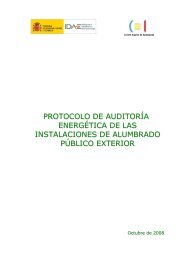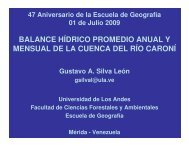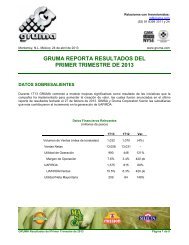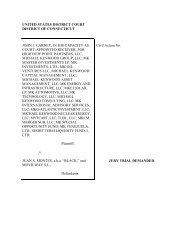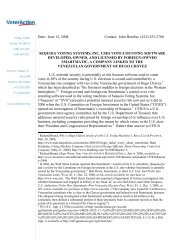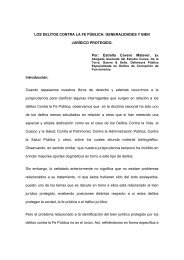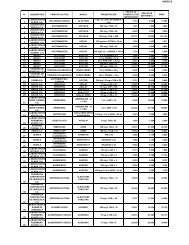broschuere ee zahlen en bf
broschuere ee zahlen en bf
broschuere ee zahlen en bf
Create successful ePaper yourself
Turn your PDF publications into a flip-book with our unique Google optimized e-Paper software.
In the case of electricity and heat the result dep<strong>en</strong>ds to a considerable ext<strong>en</strong>t on which fossil<br />
fuels are replaced by r<strong>en</strong>ewables. In the case of biofuels, the nature and prov<strong>en</strong>ance of the<br />
raw materials used is critical. For further information s<strong>ee</strong> the Annex.<br />
Gr<strong>ee</strong>nhouse gas reductions due to biofuels are particularly dep<strong>en</strong>d<strong>en</strong>t not only on the emission<br />
int<strong>en</strong>sity of the fossil fuels replaced, but also on the nature and origin of the raw materials<br />
used. Except where these are biog<strong>en</strong>ic residues (e.g. wood) and waste, it is necessary<br />
to take account of land use changes resulting from agricultural cultivation of <strong>en</strong>ergy crops.<br />
These can have a crucial influ<strong>en</strong>ce on the results of the balance. The effects of indirect land<br />
use changes (e.g. those caused indirectly by displacem<strong>en</strong>t effects) are not yet tak<strong>en</strong> into account<br />
in the calculation of gr<strong>ee</strong>nhouse gas emissions. Methodological approaches for this<br />
purpose are curr<strong>en</strong>tly being developed by the European Commission and others. Since<br />
January 2011, direct land use changes have largely b<strong>ee</strong>n ruled out in the case of biofuels and<br />
heating bioliquids thanks to the provisions of the Biofuels Sustainability Ordinance and the<br />
Biomass Electricity Sustainability Ordinance; in the case of <strong>en</strong>ergy crop cultivation for biogas<br />
production, direct land use changes still have a certain relevance, e.g. as a result of ploughing<br />
up grassland.<br />
Gr<strong>ee</strong>nhouse gas emissions avoided via use of r<strong>en</strong>ewable <strong>en</strong>ergies in Germany, 2010<br />
Electricity<br />
74.9 mill. t<br />
Heat<br />
38.0 mill. t<br />
Transport<br />
5.0 mill. t<br />
5.0<br />
22.7 16.4 27.8 7.9<br />
36.4<br />
1.2<br />
Gr<strong>ee</strong>nhouse-gas reductions [mill. t CO 2 eq.]<br />
0.5<br />
Total gr<strong>ee</strong>nhouse gases avoided 2010<br />
(electricity/heat/transport):<br />
approx. 118 million t CO equival<strong>en</strong>t,<br />
2<br />
incl. gr<strong>ee</strong>nhouse gases avoided due to<br />
electricity paid for under EEG:<br />
57 million t CO equival<strong>en</strong>t<br />
2<br />
0 10 20 30 40 50 60 70 80<br />
Discrepancies in the totals are due to rounding differ<strong>en</strong>ces<br />
sources: BMu on basis of aG<strong>ee</strong>-stat and other sources, s<strong>ee</strong> pages 27, 29 and 31<br />
aVOIDeD eMIssIONs<br />
Biomass<br />
Hydropower<br />
Wind <strong>en</strong>ergy<br />
photovoltaics<br />
solar thermal <strong>en</strong>ergy<br />
Geothermal <strong>en</strong>ergy<br />
R<strong>en</strong>ewable Energy Sources in Figures<br />
25




